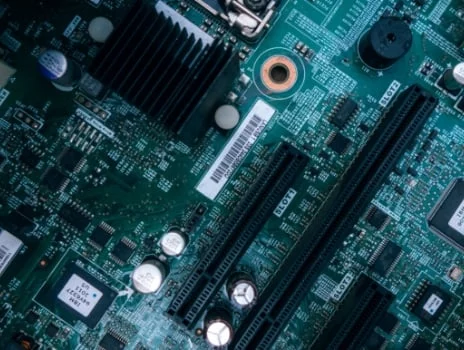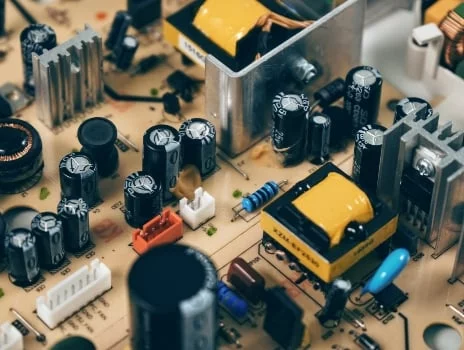Why hardware design is hard
The 25 years of experience in the industry have provided me with the opportunity to directly face the challenges and frustrations we, as hardware engineers, encounter on a daily basis. From relatively long development cycles to never-ending data sheets, our work keeps expanding and changing as the electronic industry evolves and grows in complexity.
Here are some of the main challenges I consider hardware engineers encounter and are required to solve for a successful career. Listed at the end is simple and experience forged advice that I hope one might follow.

This is a Picture
Challenge #1 - No “undo" button.
In my opinion, the biggest challenge is that there is no “undo” key for your work. Once the boards are made, the ability to rework and make changes is very limited. A drilled hole will remain a hole...obviously! I envy that Firmware developers can revert and push new builds, even after the product has shipped. In a way, a hardware engineer must be a chess player, anticipating future moves to keep his/her head above the water. A prototype run of PCBs can cost in the tens of thousands with no guarantees that it will work as planned. The most minor misstep can break the entire design, and there are countless ones that must be avoided along the way.

Challenge #2 - Long development cycle.
Hardware has a relatively long development cycle, especially when compared to firmware and software. So, if there are any issues that are identified, they are not likely to be fixed overnight. A typical hardware development cycle can take months and encompasses schematic design, layout, PCB manufacturing, assembly, functional testing, and documentation. At the same time, it takes for one hardware designer to release a version of a board, a firmware or software engineer can easily have hundreds of releases.
Challenge #3 - Keeping up to date.

The umbrella of hardware design is ever-expanding, making it a growing challenge to keep up-to-date. Hardware covers many domains, from sensors, processing, control (e.g. motors, valves), low power, high power, high speed, long distance, to harsh environments. In addition, new subdomains are being developed, such as neural networks for keyword or object identification in audio and video streams. There is always a new technology to master. Being able to adapt and incorporate new technologies in designs so that the design meets the clients’ size, weight and performance goals is an essential skill.
The process of selecting the right component can be an almost insurmountable task. There may be hundreds or even thousands of options for a single resistor on Digikey. One must be able to quickly filter down and select the most suitable component from the available options. If one limits themselves to the same components over and over again, this decision is simplified, but the designer will eventually find themselves out-of-date and pushed out of the market by new generations of designers. Gone are the days where a seasoned engineer would know all the important parts off by heart. Remember Bob Pease?
Manufacturers nowadays evolve quicker than ever, constantly releasing new products, obsoleting old ones, and merging and acquiring one another. At the same time, there is a constant stream of new players entering the market with novel technologies. A growing proportion of far-east manufacturers are competing with low-cost parts. Things are moving so fast, that sometimes these parts do not even have proper datasheets. Good luck designing!

Challenge #4 - Added complexity.
Technology is increasing in complexity. 25-30 years ago, one was able to "learn" the entire datasheet of an 8051 processor. Today, a common 32-bit microcontroller has a datasheet of more than 2,000 pages. How much of that can really be memorized? At this point, there are 2 choices; learn how to search for information, or read very fast. There are a lot more details to miss now. Still, one is expected to be able to understand how these parts work so that they can be adapted for the particular application. Copying designs from datasheets and online is a recipe for disaster. Even if it does work, there is no new knowledge or understanding gained.
We see this added complexity affecting all aspects of our designs. I remember there was a time when the entire board was powered at 12VDC. Shortly after I started, it came down to 5VDC and stayed there for years. Then it dropped again to 3.3V, then 2.5V, then 1.8V, and nowadays, we’re seeing parts that run off 0.5V. It is not uncommon now for a board to have multiple power rails that must be properly sequenced for the entire board to run. The difficulty of designing clean and stable power has multiplied. High clock speeds demand tightly controlled trace geometry and length matching to even work.
Challenge #5 - Hitting cost requirements.

Many designers make it a point of pride to develop the best quality products they can. This is, at times, diametrically opposed to the cost (or other) requirements of the product. In these situations, the designer is forced to compromise. This manifests in various ways, like using plastic gears instead of metal in a toy. There is no sense using expensive switches and materials in products with low price targets, because the budget demands that the spending be focused on other priorities.
Cost requirement is a business decision that is influenced by factors such as how long the product is expected to be desirable. After all, a product’s novelty is not indefinite; it is naturally obsoleted by the advance of technology. In the same way, no matter how well it is designed and built, a product cannot last indefinitely. Therefore, some see a product lasting significantly longer than it desirable as an opportunity to save cost. Consequently, it is common for businesses to target their costs so that the product’s lifespan and psychological obsolescence are tied together. This is largely outside of the designer’s control, but still incumbent on the designer to make do. Designing a quality product while also hitting this target can be a significant challenge.
Sometimes, it is worthwhile to advocate for the more expensive option. For example, adding a layer of safety, or selecting an expensive switch or material because it creates a better user experience. As the designer, you are the one with the technical skill and knowledge to make the best judgment. Knowing when and how to push for a more expensive solution to the client is an important skill.

Challenge #6 - “Can’t you build it for $10?”
I always answer with a smile, “What’s your volume?”
The general consumer often does not realize the considerable investment involved with each new mass-market product. Each iteration of the iPhone, for example, costs likely into the hundreds of millions of dollars in research and development, involving a small army of engineers and technologists that plan and test each stage of (pre-)production. This is amortized across the total production run which makes the costs affordable to end consumers.
The cost of each alpha prototype comes as a surprise to some of our clients because the same costs of setting up a production line are spread only across a few tens or hundreds of units. In addition, these units suffer higher component costs, since for small runs we cannot leverage volume pricing from our suppliers. Unfortunately, these always have a very high cost per unit.

Challenge #7 - Overseas production
Much of our industry is based out of the far-east, particularly Shenzhen. At times, there can be significant language and cultural barriers when communicating with suppliers. Being on the far side of the world also adds a time-zone issue, and without a local presence, it makes it tough to control the quality of the production process and safeguard intellectual property.
The general thinking is that by going overseas, anyone can get quality production for a fraction of a cost. While indeed production is cheaper far-east, not all shops are created equally. To have access to tier-1 manufacturers, whose production quality is at par with western standards, one must have a requisition for million-unit productions. For the low volume shops, the quality is a hit-and-miss gamble where quality varies not only from shop to shop but also from one production batch to the next one. Being able to find a reputable shop involves travelling to the area or knowing an expert, which eats into the savings.
On top of that, there may be issues exporting certain components due to treaties such as ITAR.

Challenge #8 - Shrinking components
Have you ever seen an 01005-sized resistor?
Have you ever tried to solder one?
In closing, I leave a few ingredients for success⁚
1. Being curious helps. Be able to scan the surface and process a lot of information easily.
2. Read the entire f@*#!* datasheet!
3. Keep the big picture but learn the value of deep dives. Pay attention to details, details and ... details.
4. Check and recheck everything.
5. Look ahead.
All Blogs